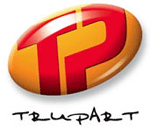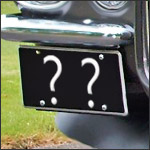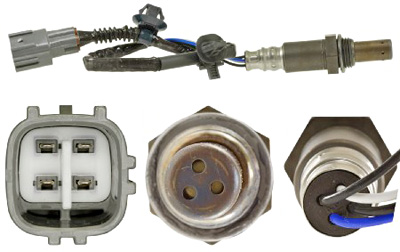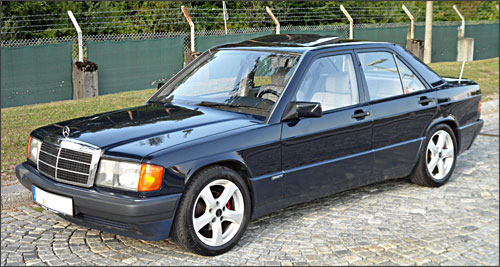|
|
|
RockAuto was the only supplier I
could find that carried the part
I was looking for. Thanks!
Ross in NY

RockAuto is always
my go-to choice for value and availability.
I always recommend them to friends.
Will in Texas
|
|
Upcoming Events
If you would like your event featured here, email us with details. |
|
|
| Motoring
Thru Time
2/4/2012
Phoenix, AZ
e-mail
KAARC Swap
Meet
2/4/2012
Kalamzoo, MI
e-mail
West Coast
Muscle Car Club Annual Car Show
2/4/2012
Naples, FL
e-mail
Car Show/Cruise-In
2/4/2012
Port Orange, FL
e-mail
Jaxcon 2012
2/4/2012
Orange Park, FL
e-mail
Midtown Manatee
2012 Car Show
2/4/2012
Bradenton, FL
e-mail
Rides Extravaganza
& Smokin Flamez BBQ Competition
2/4/2012
Vero Beach, FL
e-mail
The David
Calleja Memorial Car Show
2/7/2012
Victoria, AU
e-mail
Wedgefield
Firewise Community Annual Car
Show
2/11/2012
Orlando, FL
e-mail
Renault Zürich
Mini Salon
2/11/2012
Schauffhausen, Switzerland
e-mail
Dr. George
Car Show 2012
2/11/2012
Palm Desert, CA
e-mail
Hot Rodding
for Heros
2/11/2012
Gainesville, FL
e-mail
19th Annual
Sweetheart Car Show
2/12/2012
Phoenix, AZ
e-mail
Turbo Buicks
at Old Town
2/12/2012
Orlando, FL
e-mail
|
|
|
| Trupart – Parts for European Market Vehicles |
|

|
RockAuto continuously seeks out new
parts to better serve customers worldwide.
RockAuto is pleased to now offer Trupart
Quality Automotive Parts for European
market vehicles. The Trupart line
includes Air Filters, Glow Plugs,
Tie Rod Ends, Ball Joints, Wheel Bearings,
Headlamps, Tail Lamps, Turn Signals,
Fog Lamps, Mirrors and more.
Trupart parts are
designed to be exact replacements
and are an affordable way to restore
the original appearance, performance
and value to your European market
vehicle. Stocked in the United Kingdom,
Trupart parts are ready to ship to
your location in Europe or anywhere
in the world!
From VW to Fiat
to Vauxhall and Nissan, from Peugeot
to Mercedes-Benz to Alfa Romeo and
Ford, Trupart has your vehicle covered!
If you purchased your vehicle in Europe
for use in Europe, you can trust Trupart
parts will be correct and an exact
fit.

If you drive a European
brand vehicle purchased in North America
for use in N. America, of course we
have products from separate manufacturers
for you! Open the RockAuto
catalog and refer to the flag
( European model for European market
models,
European model for European market
models,  US model for US market models, etc.)
in each part description to choose
the correct parts for your vehicle.
Remember, your vehicle market is determined
by the location where the vehicle
was sold, not where it was assembled
nor where the car manufacturer has
its home base. For example, the headlamp
on a VW Beetle sold in the US market
is different than the headlamp on
a VW Beetle sold in the European market
even if both Beetles happened to be
assembled in Germany, Mexico or elsewhere.
US model for US market models, etc.)
in each part description to choose
the correct parts for your vehicle.
Remember, your vehicle market is determined
by the location where the vehicle
was sold, not where it was assembled
nor where the car manufacturer has
its home base. For example, the headlamp
on a VW Beetle sold in the US market
is different than the headlamp on
a VW Beetle sold in the European market
even if both Beetles happened to be
assembled in Germany, Mexico or elsewhere.
|

| RockAuto Careers |

|
Live
in the Madison, WI area? Interested
in a career with RockAuto? Learn why
people love working for a fast-paced,
technology-driven company that knows
how to have fun! For more information
about career opportunities, employee
experiences, and our company culture,
check out our Careers
page.
|

| Forum of the Month |

|
Riviera Performance is a discussion board
and knowledge base created specifically
for owners and admirers of the Buick
Riviera, with a focus mainly on later
generations. The Riviera Performance
knowledge base consists of a vast
compilation of pictorial write-ups
and an extensive FAQ listing, where
members can easily find information
they need. In case of more in-depth
topics, the forums offer an active
network of members to assist in the
areas of tech, tuning, suspension,
interior/exterior, audio, racing,
and basic maintenance.
Since early 2007,
the Riviera Performance mission has
been to continue compiling its knowledge
base in hopes of educating Riviera
owners and keeping passion for these
cars alive. If you own one, or have
an appreciation for these cars, please
stop by and check out the site!
If you are the
administrator or member of a forum
and you would like to see your website
featured in an upcoming newsletter
and receive a discount code to share
with your members, contact cynthia@rockauto.com.
|

|
Repair Mistakes & Blunders
|
|

|
As
a teenager fresh with a driver's license,
my father gave me his 1970 Buick Skylark
which was well used up, had high mileage,
and a questionable maintenance history.
One of the immediate repairs required
was front brakes as they squealed
and made a grinding noise when applied.
Now, the Skylark
had front drum brakes which were marginal
at best for such a heavy car. I suspected
that the drums were scored and needed
to be turned down along with new shoes
and springs. So, off came the wheel,
I sprayed the drum down with penetrating
oil to loosen the rust, and I tried
to remove the drum but it wouldn’t
budge. I tried prying it, pushing,
pulling, beating on it with a rubber
mallet, but it wouldn’t budge.
After hours of pounding, frustration,
and some desperation, I transitioned
to a bigger hammer, a 2lb sledge.
Finally after repeated
beatings, the drum began to loosen
and off it came. Sure enough, it was
scored and the pads were worn down
to the rivets. The second drum removal
went quicker as I went right to the
big hammer.
I took the drums
to the local machine shop to be turned.
The guy at the counter asked a few
questions about what I wanted, what
kind of car they came off of, etc.
Then he asked, “Where
are the hubs?”
I replied, '“Huh?”
To which he answered,
“We usually get these drums
with the hub attached because they
are pressed on!”
No wonder they were
so hard to get off! I could have simply
removed the one nut holding the hub
and brought the whole assembly to
the store. Live and learn.
Chris in New Jersey
Tell us about
your most infamous auto repair blunder
or unconventional fix. Use your woe
to help others avoid similar mistakes
or share off-the-wall solutions that
worked (at least for awhile!). Please
email your story to flamur@rockauto.com.
Include your mailing address and shirt
size (large or extra large) and we
will mail you a RockAuto t-shirt if
we publish your story (see the t-shirts
under Extras in the catalog). The
story will be credited using only
your first name and your vague geographic
location (state, province, country,
continent, etc.) so you can remain
semi-anonymous!
|

| Automotive
Trivia |
|

|
The
core of a typical oxygen sensor is
a zirconium dioxide (zirconia) ceramic.
Oxygen ions flow freely through this
ceramic after it is heated to 600
deg. F (316 C). What else is zirconium
dioxide used for?
A. imitation diamonds
B. thermal barrier coatings for diesel
engine parts
C. foundation for dental crowns
D. all of the above
Answer
below
|

| The Other End of the Oxygen Sensor
|
|

|
Oxygen
sensors thread into the exhaust system
where they obviously face extreme
heat and harsh exhaust gases. Oxygen
sensors fail when the bulb inside
the exhaust pipe is exposed to lead,
silicone, antifreeze, engine oil and
other contaminants. Many people are
not aware of the role that the other
end of the oxygen sensor plays. Surprisingly,
the visible end of the sensor with
the wire pigtail is just as important
and sensitive to contamination as
the end slugging it out in the exhaust
pipe.
Nearly all oxygen
sensors are designed to measure the
difference between the oxygen level
in the exhaust with the oxygen level
in the outside air. The sensor generates
a voltage based on the difference
in oxygen levels that the engine computer
uses to continuously adjust the fuel
mixture, etc. The outside air the
oxygen sensor needs for its comparison
enters the sensor at the end with
the wire pigtail. Depending on the
sensor design, the air might enter
through a dedicated hole or through
the wires.

The oxygen sensor
ambient air inlet is likely to be
protected by silicone boots, porous
PTFE (Teflon) or some other means.
A routine splash of water is not likely
to hurt an oxygen sensor, but leaking
chemicals (engine oil, power steering
fluid, etc.) can clog or enter the
oxygen sensor air inlet and damage
the sensor. Efforts to “protect”
oxygen sensors by spraying them with
lubricant, covering them with insulation,
etc. can backfire if the sensor’s
air inlet is blocked or contaminated.
Oxygen sensor installation
instructions emphasize that the entire
sensor, including the wiring harness,
is part of an integrated system. Routing
and connecting the wires is as important
as carefully threading the sensor
into the warm exhaust pipe. I just
read installation instructions for
a Bosch oxygen sensor that had just
two steps covering removing the old
sensor and screwing the new sensor
into the exhaust port. The instructions
had ten steps covering the connection
and routing of the oxygen sensor’s
four wires.
The oxygen sensor
bulb buried in the exhaust pipe is
on its own, but you can maintain the
other end by making sure the wiring
harness is never torn, rerouted or
covered with goop.
Tom Taylor,
RockAuto.com |

| Paul's 1992 Mercedes 190E Sportline |
 |
This
is my European spec 1992 Mercedes-Benz
190E Sportline. It has a 2.6L inline
six cylinder engine with a five speed
manual transmission. I purchased the
vehicle from a friend while we were
stationed at a US military base in
Stuttgart, Germany.
All of the parts
that I have purchased for my Mercedes
have been from RockAuto.com. I have
done some very simple work, from replacing
the rear exhaust, to some more intensive
work, like replacing the struts and
control arms. A few other projects
entailed replacing the valve cover
gasket, a cracked distributor cap,
calipers and rotors, and a complete
overhaul of the radiator and associated
hoses.
Thanks for everything!
Paul
|
| Share Your
Hard Work |
| Do
you purchase parts from RockAuto?
If so, RockAuto would like to
feature you & your car or
truck in our monthly newsletter.
New, old, import, domestic,
daily driver, trailer queen,
classic, antique, we want to
see them all! Please e-mail
flamur@rockauto.com
with your vehicle's history,
interesting details, and what
parts from RockAuto you have
used.
|

| Let
RockAuto Help |
|

|
Are
you organizing a car show or
other auto related event? From
goody bag stuffers to gift certificates...we
can help. We can even publicize
your event in our newsletter.
Just
send us an email
with information about your
show.
|

| Automotive
Trivia Answer |
|

|
The core of typical oxygen sensor
is a zirconium dioxide (zirconia)
ceramic. Oxygen ions flow freely
through this ceramic after it
is heated to 600 deg. F (316
C). What else is zirconium dioxide
used for?
A. imitation
diamonds
B. thermal barrier coatings
for diesel engine parts
C. foundation for dental crowns
D. all of the above
Answer:
D. all of the above
Back
up to trivia question |
© 1999-2012 RockAuto,
LLC - Madison, Wisconsin USA. RockAuto
name and logo are registered trademarks
of RockAuto, LLC. Manufacturer names
and logos in the RockAuto catalog
are trademarks of their respective
companies and are used only to identify
their products. All rights reserved.
|
|
|